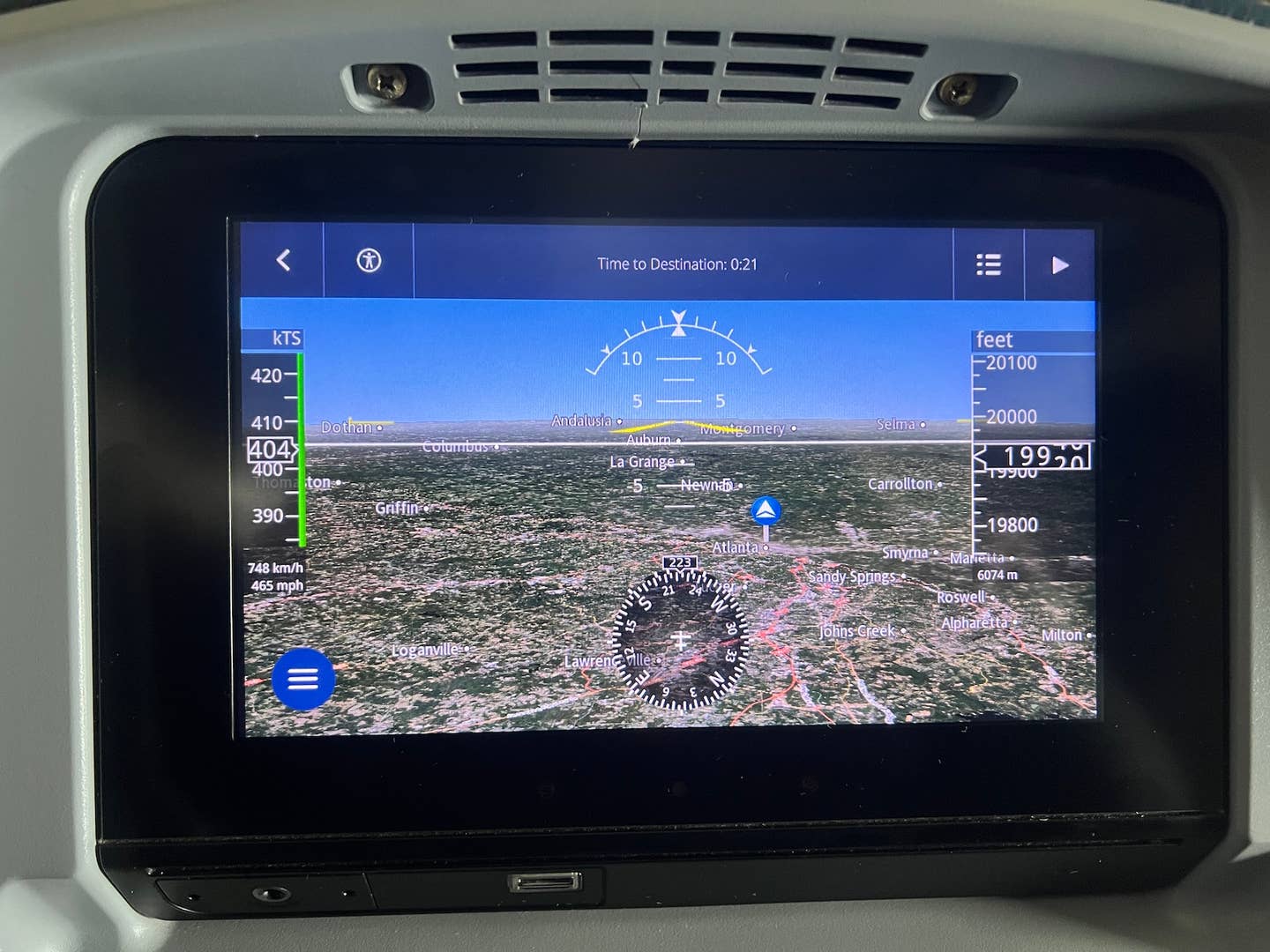Deconstructing The Cirrus Hate
With anti-Chinese sentiment at an all time high, Cirrus takes it on the chin for being owned by the Chinese government. Should it?

Time can make all the difference. Sometimes it’s 30 seconds, or two weeks, or the 623 long days it took NASA to put Apollo back on track after a deadly fire. For my purposes here, it’s three years and a few months. That’s the time that passed between Cirrus just being one of those aviation companies the Chinese bought to an object of outright derision in our news coverage.
My source for this conclusion is there for all to see. AVweb’s audience is generally well-informed and sophisticated, thus the comments and letters we get are a fair representation of industry zeitgeist. To say it has shifted to Cirrus being a dark force is to do violence to the word understatement, even as Cirrus booms along selling ever more piston aircraft and its single-engine jet. I wonder if owners enjoying the expansive view from the front of an SF50 ever stop to think that it was Chinese government money that got them there. And how do they rationalize it?
I can promise you that other people are thinking about that. The three years I’m referring to are what passed between the time I did this video on the Cirrus TRAC trainer in late 2019 and this more recent one on the newly revealed SR10 trainer. The TRAC video elicited hardly a peep about China as a bad actor. The SR10 video? Almost nothing but. Of 194 comments, barely a dozen have to do with the airplane’s technical merits, market potential or the fact that it’s, you know, a new airplane design. The rest are bitter variations on the theme of Chinese mal intent.
“Friends don’t let friends fly a Cirrus,” thundered one commenter. What happened since the TRAC video, of course, is the spy balloon fiasco, saber rattling by the Chinese military in the Taiwan Straits, Chinese support for a war in Ukraine and just general bullying on the international stage. It’s hard to know if one specific thing unleashed the bile. Or is it just the cumulative weight of Chinese general aviation ownership or the fact that Cirrus is owned by the Chinese government through the Aviation Industry Corporation of China that seems to position it for particularly vitriolic opprobrium? By comparison, Continental Aerospace Technologies, also owned by AVIC, Diamond Aircraft and Mooney are all owned by Chinese interests, but seem to generate only sidelong smears rather than the full measure of abuse Cirrus gets.
And, of course, the ire is largely misplaced. Aviation consists of the have and the have mores, and the latter populate the bizjets and the Boeings, where the Chinese have no significant market presence. The GA turboprop world is relatively vibrant and largely owned by a few players, none of whom are Chinese. That leaves the backwater of GA pistons which sort of float along on a sheen of low-volume sales but which few western industrialists consider a business worth being in, much less purchasing.
If you doubt that, recall that when Cirrus was wandering in the wilderness looking for a buyer circa 2009, western investors weren’t beating a path to its door. In the absolute, the company had value and sales potential, but also a significant amount of debt (about $80 million) and it was digging itself out of the 2008 downturn. A Bahrain-based equity company called Arcapita then owned 58 percent of Cirrus and was desperate to unload it.
Veteran aviation consultant Brian Foley saw both value and potential in Cirrus and knew his way well enough around the world of investment banking to try for a deal. “It was an esteemed brand and something that pilots aspired to,” Foley says. “And it was invented in the U.S.”
What happened? Nothing much. “What we learned in the end is that the western investor has a very different mindset than the Chinese. The Chinese don’t have a time scale. In the U.S., it’s two to five years,” he told me. And among some investors, it’s a few quarters. There’s no doubt that the opportunity was there, a good chance that it could have returned on the investment within the decade—which it has, in fact, done—but it certainly wasn’t flipable for a quick profit.
Welcome to the world of western capitalism, or more specifically, Jack Welch-style capitalism, the famed GE CEO who pioneered the idea of shareholder value at the expense of long-term planning, product quality, customer service and worker satisfaction. Once the hero of Wall Street, Welch is now credited with having destroyed a once-great company and saddled investors with the kind of quick-hit ethos that surely made Cirrus so unattractive.
Enter the Chinese, who paid a reported $210 million for Cirrus in 2011, although we don’t know how the deal was structured. Foley thought it was overvalued at that price, but for a government atop a then $7 trillion economy, we’re talking coffee money. And evidently, the Chinese had minimal expectations on return or at least ones we’ve heard about. They had other priorities, so to speak, one of which was a line item in the five-year plan that called for investment in aviation.
Obviously, the Chinese discussions did. Although there was worry that AVIC would pack the company up and move it to China, that wasn’t a realistic possibility and may still not be. The meat of Cirrus sales are in North America and Europe and it would make no sense to invest heavily in a startup factory in China only to ship airplanes halfway around the world. It is true that China has an acute unemployment problem, but moving an airplane factory to a country without the skill base would be a chaotic way to solve it. Ten years from now, it might look different.s
So who got the better end of the deal in the Cirrus purchase? I’d say for the medium term, the nearly 1700 employees of Cirrus got the best deal. They got to keep their jobs, investment brought the jet to market—the company just announced 500 aircraft sold—and the factory has been expanded and improved. The SR line continues to lead sales in the piston market. The tradeoff for that success is that Cirrus may throw off $100 million in profits to the Chinese government on about $765 million in direct aircraft sales. AVIC also gets some production and marketing expertise, but no significant technology transfer. Well, perhaps some in the Williams FJ33 engine used in the SF50. It presumably has cruise missile applications. Weigh that against Cirrus being a major employer in Duluth. I’ll admit to being conflicted, but also disinclined to believe those workers should give up their jobs in the national interest.
Alan Klapmeier told me he thinks Cirrus wasn’t in danger of bankruptcy without the Chinese purchase. While I agree, I wouldn’t bet the farm on that. Thanks to the solidity of its products and a loyal customer base, Cirrus actually weathered the 2008 downturn better than many companies did. Yet it still faced challenges. The Cirrus sale to China had to be approved by the Committee on Foreign Investment, which vets these sales for potential defense or technology related sensitivity. There was none. There is none now, except for the aforementioned FJ33. But it’s reasonable to believe CFIUS would reject the same approval now because, well, things have changed. Anti-Chinese sentiment seems unlikely to diminish.
In the broader context, consider where the innovation in light aircraft GA is coming from. It’s Cirrus, it’s Diamond and Continental Aerospace, with its diesel line. While this innovation didn’t originate under Chinese ownership of those companies, Chinese capital kept it perking along. Let’s not leave out Piper, which at least has a diesel version of the Archer and is doing well with its M-Class turboprops. Piper is owned by the government of Brunei, a wealthy petro state.
Meanwhile, Cessna has proposed and canceled two diesel projects and the leading news from AirVenture this year was exciting new interiors for the Skyhawk. Don’t forget the Skycatcher fiasco. But it’s actually worse than that. Recall that Cessna bought the Lancair/Columbia line in 2007, invested some capital in it, but then summarily killed it in 2018. It never made significant market inroads against Cirrus but many thought that with a lasting commitment, it could have. Someone who worked at Lancair at the time told me the culture clash with Cessna all but assured failure of the project, thus wiping yet another new aircraft from the market.
Would it have been better for Cirrus—Arcapita, really—to stand on the patriotic high ground and refuse to sell to AVIC? Given that Arcapita is an Islamic Bahrain-based company, it’s perhaps a little delusional to even consider it. As it was, the Arcapita shareholders took a bath on the deal.
In the end, if you feel like raging at Cirrus—and I understand the urge—your anger might be more productively aimed not at the people who work there but at your stockbroker or your wealth manager. U.S.-style capitalism is amoral and with the exception of a few companies and funds that specialize in onshore investment, not especially patriotic, either.
“End of the day,” says Bryan Foley, “it’s just all business.”






